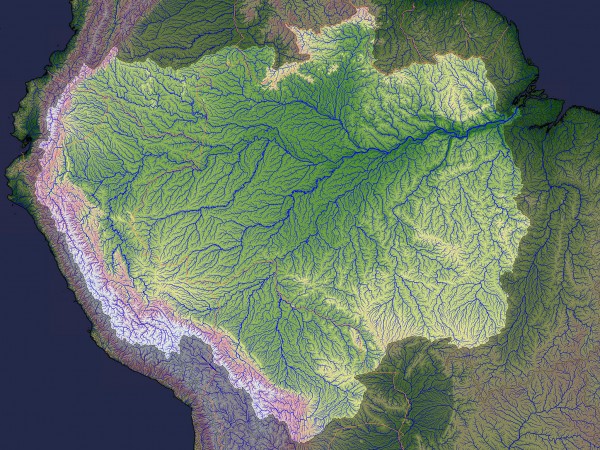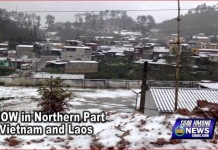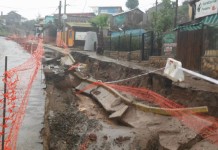The Amazon once flowed in the opposite direction, from east to west.
But how to explain the enormous shift of the Earth’s largest river?

IMAGE: JESSE ALLEN/NASA
With the mighty Andes at the western end of the continent it seems logical that South America’s rivers flow east. But, until 10 million years ago, most of what is now the Amazon basin was drained by a river that flowed west into a giant lake that lay at the feet of the northern Andes. From there the water flowed north to the Caribbean Sea. Since the Isthmus of Panama had yet to form, this water was then swept west into the Pacific.
But how an entire continent was tilt?
Changes in convection within the Earth’s mantle? Not so complicated! This new computer modelling study shows that nothing more than erosion is needed to explain this amazing reversal. The rise of the Andes as the South American plate rode over the Nazca Plate can explain the process on the appropriate timescale.
At first the Andes rise produced a trench to the east, which became the paleolake into which the westward-flowing Amazon emptied. With time, sinking slowed and erosion accelerated, replacing the lake with a series of wetlands known as the Pebas. Eventually sediment accumulation raised the vast Pebas marshlands to the point where the rainfall in the area was pushed back the other way.
The model successfully matches the observation that sediment deposited at the Amazon’s mouth has increased over the period of its eastward flow. At first, when the Amazon’s sources were relatively flat, much of the sediment was dumped part way to its mouth, only being remobilized eons later. However this model fails to fully reproduce the spacial and temporal evolution of the Pebas system as observed in geological data.
So further work is needed to explain the flow reversal of the Amazon River I think!











